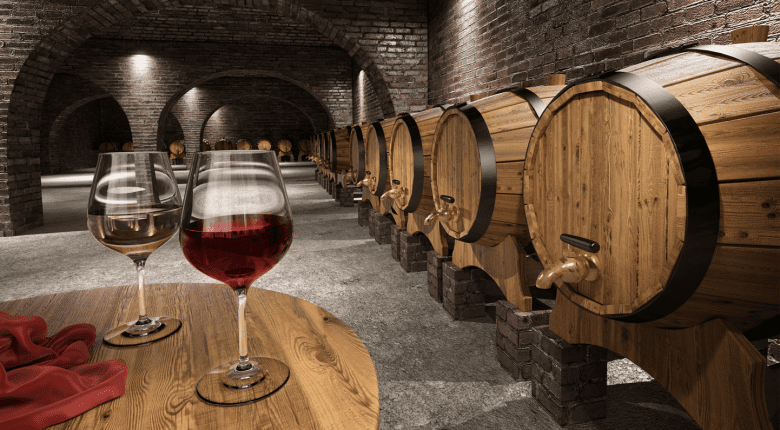After the fermentation process, during which sugar is converted into alcohol and carbon dioxide, most wines need to be left to mature for some time. During this maturation phase, wine is stored in wooden barrels or stainless steel tanks. Read our blog to find out more.
You might not realise it but not all wine barrels are the same! In the case of premium-quality wines, in particular, experts can clearly determine, by taste alone, the manner in which the wine has been matured…
To perfectly develop its full taste, wine must be allowed to mature after fermentation – a process known as ‘ageing’. Both white and red wines can be matured in oak barrels; however, it is mostly red wines that tend to be aged this way. Depending on the wine, the process takes different lengths of time – around three months for a simple red wine and up to seven years for a full-bodied one. Only after reaching maturity are wines released for sale.
The ageing process very much depends on the size of the barrel. In a smaller barrel, the wine has far more contact with the wood and with the air due to the small volume, and this results in it maturing much more quickly than in a large barrel. Another important factor in ageing is whether the wine matures in a new or a used barrel. An old barrel can assist with ageing, yet it does not particularly affect the taste of the wine, whereas with a new barrel, the wood is rich in tannins, which transfer to the wine and give it a special flavour. In particular, tannins tend to lend sweet notes of caramel or vanilla to the wine. The colour of a wine that has been aged in an oak barrel is more intense than that of one aged in a stainless steel tank. With red wines aged in stainless steel we find that the tannins are slightly milder, the taste is more complex, and the ageing process is accelerated.
The four main barrel types used to age wine
- The old traditional wooden barrel has a capacity of 7 to 100 hectolitres (700 -10,000 litres). It is mainly used to age Italian and Spanish red wines, and German white wines.
- The old German Stück barrel has a capacity of 1,200 litres, and is typically used for wines from the Rhine district. On the other hand, along the Moselle 1,000-litre Fuder barrels or 500-litre Halbstück barrels are preferred.
- The pipe is the traditional barrel for port and has a volume of 420-630 litres.
- The barrique is a small traditional barrel made from new wood, with a volume of 225 litres. Its counterpart in New Zealand and Australia is the Hogsbead barrel, which has a volume of 300 litres.
Once the wine has aged and has been bottled, the most important factor becomes how you store the wine at home. Of course, it’s your decision where to store your favourite wines, but Liebherr has an impressive range of superb-quality multi-temperature wine cabinets and wine storage cabinets. These cabinets provide your high-quality wines with the very best storage conditions in terms of temperature, UV light protection, air quality and resting atmosphere.
Do you have any questions or comments about this post? Please feel free to use the comment function below or start/join in discussions with us on Facebook and Twitter.
